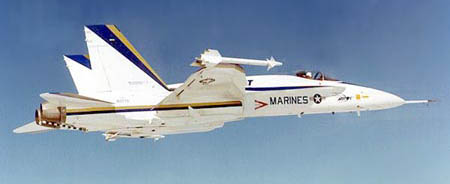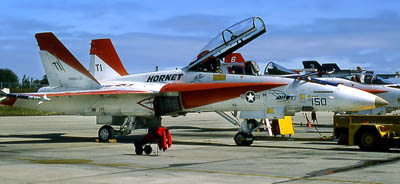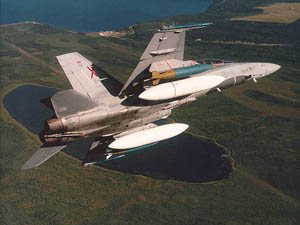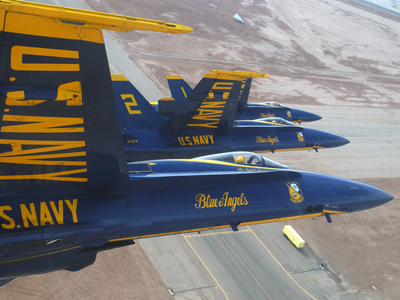 |
||||||
|
||||||
|
|||||||
|
|||||||
| F/A-18 Hornet | |||||||
The F/A-18 Hornet is one of the most commonly used fighter aircraft of the world at present. |
|||||||
|
|||||||
A characteristic feature of the design of the F-18 are the big leading edge extensions or LEX’s forward of the wing, which allow flight at a very high angle of attack. The Hornet was one of the first fighter aircraft to use multi-function displays, which allowed it to be deployed both in a fighter role or attack role. That’s also the reason for the official designation F/A-18. It was also especially designed to allow easy maintenance. For example, the engines are connected in only three places and can be replaced within a matter of hours. |
|||||||
|
|||||||
| The F/A-18 was first used in Combat during the controversial 1986 attacks on Libya, and massively used during Operation Desert Storm, the first Persian Gulf war. During that war, the Hornet was used in over 4551 missions, with only two getting lost. It was also involved in the Attacks on Bosnia and Kosovo in the 1990ies as well as on the second Persian Gulf War or Operation Enduring Freedom. American F/A-18 Hornets also played an important role in the 1996 motion picture Independence day as the aircraft flown during the final attacks against the Alien spacecraft. |
|||||||
|
|||||||
Canada replaced its F-101 Voodoos, F-104 Starfighters and F-5 Freedom Fighters with F/A-18’s. Canadian Hornets took part both in the first gulf war as well as in the attacks on former Yugoslavia. Canada was also the first export customer for the F/A-18. |
|||||||
|
|||||||
| The Spanish air force flies the Hornet in both roles, and the Spanish Hornets took part in missions to Bosnia, Kosovo and Yugoslavia. Kuwait operates 39 Hornets, which had been ordered already before the Iraqi invasion of 1990 and were delivered to the Kuwait Air Force while the liberation of Kuwait was in progress. Switzerland operates 34 F-18 Hornets since 1996. The smallest Operator of F/A-18 Hornets is Malaysia, which flies 8 two-seater D-models, which serve alongside MiG-29’s. The NASA uses a number of F/A-18’s that have been retired from Navy service in a number of roles, mostly as chase planes. One of the chase planes has been equipped with a telescope in the rear seat to observe the sky from higher altitudes, where the air is cleaner. Other NASA versions were modified for test purposes, the F-18 AAW and F-18 HARV. The design of the F/A-18 has been further developed to the F/A-18 E/F, which included a longer fuselage, bigger wings and LEX’s and modified air intakes. |
|||||||
|
|||||||
| wingspan: 12.3m length: 17.1m height: 4.7m empty weight: 11.200kg max loaded weight: 23.400kg maximum speed: 1.915km/h (=Mach 1,8) range: 537km |
|||||||
| return to top |





